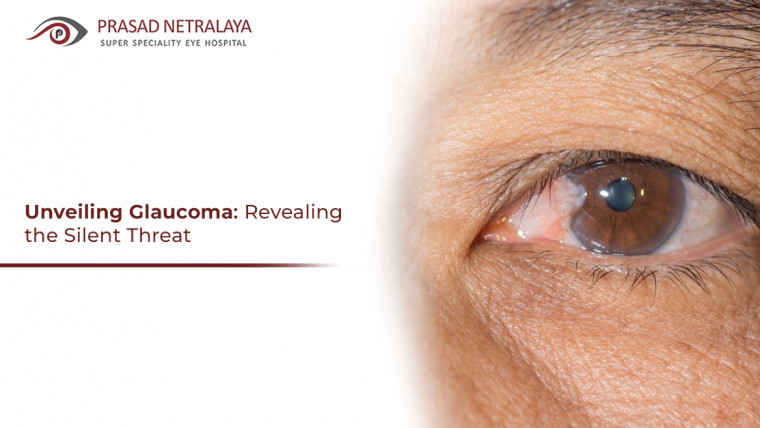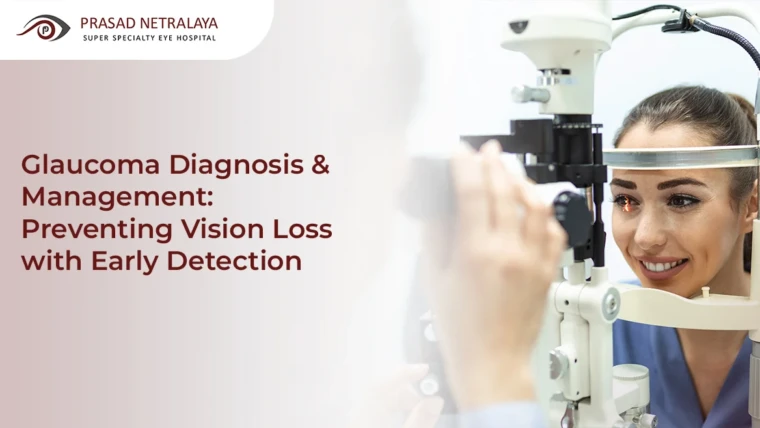Glaucoma is an eye condition that damages a structure at the back of the eye, known as the optic nerve. The health of the optic nerve is important for good vision. Fluid build-up in the front of your eye, usually at old age, causes increased pressure on the eye, damaging the optic nerve. Although it can occur at any age, Glaucoma is the leading cause of blindness for people over the age of 60. However, it can be prevented if identified and treated on time. Read along to know more about Glaucoma, its symptoms & treatment.
Table of Contents
What Causes Glaucoma?
The fluid in our eyes is known as the aqueous humor. In healthy functioning eyes, this fluid flows out normally through a mesh-like channel. However, when this channel gets blocked the liquid builds up, causing too much pressure in the optic nerve. This results in glaucoma. Some of the rare causes of glaucoma include chemical injury to your eye, severe eye infection, blocked blood vessels inside the eye and inflammatory conditions.
Types of Glaucoma
There are many variations in glaucoma which can be grouped into two main categories – Open-angle glaucoma and Angle-closure glaucoma. It is called an angle in reference to the angle that the iris makes with the cornea.
- Open-angle glaucoma – Also known as wide-angle glaucoma, this is the most common type of glaucoma. In this condition, the drain structure in the eye, known as the trabecular meshwork looks fine but doesn’t let fluid flow out as it should.
- Angle-closure glaucoma – Also known as acute, chronic angle-closure or narrow-angle glaucoma, this condition doesn’t let your eye drain like it should because the drain space between your iris and cornea becomes too narrow. Thus resulting in causing too much pressure in the eye.
What are the symptoms of Glaucoma?
Open-angle glaucoma symptoms are often very discreet and go unnoticed in the early stages. It develops slowly and sometimes without noticeable sight loss for many years. On the other hand, angle-closure glaucoma is a much more rare form of glaucoma that develops very quickly and demands immediate medical attention. Nonetheless, with regular eye exams, early detection, and treatment, you can preserve your vision against all kinds of glaucoma.
Symptoms of open-angle glaucoma, which can only be experienced in the later stages are:
- Loss of peripheral vision, usually in both eyes
- Tunnel vision
Symptoms of angle-closure glaucoma are much easily identifiable as the following:
- Blurred vision
- Redness of the eye
- Severe eye pain
- Halos around lights
- Nausea and vomiting
- Visual disturbance, often in low light
Glaucoma Treatment
Glaucoma is treated by lowering your eye pressure. Depending on the condition, glaucoma treatment options may include prescription eye drops, oral medications, laser treatment, surgery or a combination of any of these.
- Eye Drops: Prescription eye drops are often the first stage of glaucoma treatment. These are used to decrease eye pressure by improving how fluid drains from the eyes or by decreasing the amount of fluid your eyes generate.
- Oral Medications: In some cases tablets are used temporarily to bring down the eye pressure.
- Surgery: When both eye drops do not provide much improvement, surgery is your best option. Compared to older methods of glaucoma surgery, modern procedures continue to improve with significantly lower risks of complications.
Prasad Netralaya provides comprehensive diagnostic facilities, which include various kinds of surgeries and comprehensive clinical examinations. Our doctors have extensive experience and offer a variety of surgical treatments to people of all ages.
Prasad Netralaya is Mangalore and Udupi’s leading eye care centre and the ideal place for identifying and treating Glaucoma. Got questions? Call us at +91 9513596565 or book an appointment if you wish to visit in person.
Dr. Vikram Jain, M.S. had his medical training (MBBS) from Kasturba Medical College, Mangalore, India. He did his master’s in Ophthalmic surgery from Kasturba Medical College, Manipal. He currently manages the Glaucoma department of Prasad Netralaya hospital.



